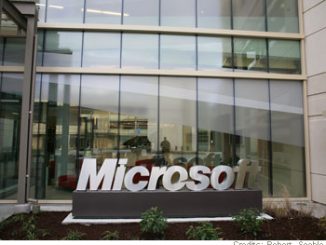- Microsoft is retiring Skype on May 5, 2025, to focus on Microsoft Teams, which now has 320 million monthly active users, reflecting a strategic shift to streamline its communication platforms.
- Skype, acquired for $8.5 billion in 2011 with 150 million users, saw its base shrink to 23 million by 2020, struggling to adapt to the smartphone era as competitors like Zoom and Slack gained ground.
- Users can transition to Teams using Skype credentials with synced data or export their Skype history, ensuring continuity as the service ends, with no job cuts reported.

Microsoft’s (MSFT) decision to retire Skype on May 5, 2025, marks the end of a pioneering era in digital communication, as the company shifts its focus entirely to Microsoft Teams, a platform now boasting 320 million monthly active users. This strategic pivot, announced on Friday, underscores a broader effort to streamline its communication offerings, a move that reflects both the competitive pressures of the modern tech landscape and the evolving demands of users in a smartphone-dominated world. Skype, once a revolutionary force with its launch in 2003, redefined how people connected globally, offering audio and video calls that eroded the dominance of traditional landlines and propelled the service to a peak of hundreds of millions of users. Yet, despite its early success, the platform’s decline – evidenced by a drop to 23 million monthly users by 2020 – highlights its struggle to adapt to contemporary needs, particularly as rivals like Zoom and Slack gained traction with more seamless, mobile-friendly experiences.
The acquisition of Skype by Microsoft in 2011 for $8.5 billion, outbidding tech giants like Google (GOOG) and Meta (META), then Facebook, was a bold play to cement its place in the communications market. At the time, Skype commanded 150 million monthly users, a figure that promised significant growth potential. However, the service’s underlying technology, built for an era of desktop dominance, proved ill-equipped for the shift to smartphones, a misstep that became glaringly apparent as mobile usage soared. The pandemic briefly revitalized Skype’s relevance, but Microsoft’s aggressive integration of Teams with its Office suite – a calculated push to capture corporate users, once a key Skype demographic – signaled a clear shift in priorities. Teams, now a cornerstone of Microsoft’s ecosystem, has eclipsed its predecessor, leveraging interoperability and a robust feature set to meet the demands of remote work and enterprise communication.
For Skype users, Microsoft says that the transition offers two distinct paths. Starting with members of the Teams and Skype Insider programs, individuals can sign into Teams using their existing Skype credentials, with chats and contacts automatically syncing to the new platform. This interoperability extends further, allowing Teams users to call and chat with those still on Skype, and vice versa, ensuring continuity during the wind-down period ending May 5. Alternatively, users opting not to migrate can export their Skype data – chats, contacts, and call history – preserving their records as the service fades into obsolescence. M’soft has emphasized that this shift will not result in job cuts, a reassurance that contrasts with the broader narrative of Skype joining the ranks of the company’s missteps, alongside Internet Explorer and Windows Phone.
Reflecting on Skype’s legacy, Microsoft acknowledged its role in “shaping modern communications,” a sentiment that resonates with its early disruption of the telecom industry. The service’s intuitive design and global reach made it a household name, a status few tech products achieve. Yet, its trajectory mirrors challenges faced by other tech giants – Google’s revolving door of Hangouts and Duo being a notable parallel – where sustaining relevance in the fast-evolving communication space has proven elusive. Microsoft’s reticence to disclose current Skype user numbers suggests a further erosion from the 23 million recorded in 2020, a decline that Teams’ 320 million monthly active users starkly overshadows. As Skype prepares to ring off for the last time, its story serves as a testament to the relentless pace of technological change, where even the most iconic tools must evolve or step aside.
WallStreetPit does not provide investment advice. All rights reserved.
- Bulenox: Get 45% to 91% OFF ... Use Discount Code: UNO
- Risk Our Money Not Yours | Get 50% to 90% OFF ... Use Discount Code: MMBVBKSM
Disclaimer: This page contains affiliate links. If you choose to make a purchase after clicking a link, we may receive a commission at no additional cost to you. Thank you for your support!




Leave a Reply